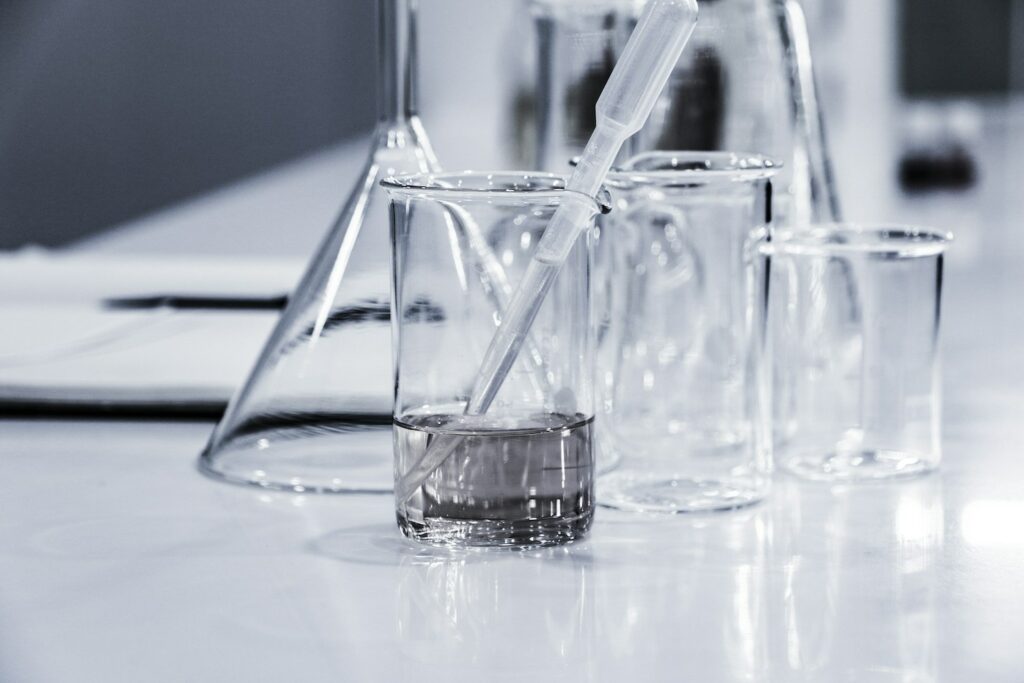USP 795 vs USP 797 Hygiene, Garbing, & BUD Dates
As workers in the pharmacy field, we have to abide by certain pharmacy rules and guidelines. When I was first beginning my time as a pharmacy student, I wondered about what these regulations were and where we could find them. Luckily, my first lab in pharmacy school highlighted the criteria all pharmacy personnel should follow when compounding medications. We learned that the USP Guidelines were the “gold standard” for regulations. For the basis of compounding, we began with looking at USP chapters 795 and 797. These chapters created a great baseline for me to understand what goes into pharmaceutical compounding.
Table of Contents
What is USP?
USP is the United States Pharmacopeia. It is a scientific, independent nonprofit that was founded in 1820. The USP works to assist in regulations and quality of medicines, dietary supplements, and food. Their goal is to grow and improve the global supply chain of medications so that when people need them there is stock and the medications work well. In the USP guidelines, any chapter numbered less than 1000 is enforceable. Any chapters that are greater than 1000 are informational.
USP 795
USP 795 is titled “Pharmaceutical Compounding – Nonsterile Preparations.” The purpose of this chapter is to provide guidance in the preparation of nonsterile compounds in the healthcare field. 795 was first released in 2000 and the latest revision was finalized in 2022. This guideline documents the appropriate attire and procedures to create nonsterile compounds. It teaches healthcare personnel how to assign beyond use dates (BUD) and criteria for stability. Learn what Non-Sterile compounding is. It also describes the categories of compounds based on complexity of formulation. There are three categories, which are simple, moderate, and complex. Typical types of dosage forms that apply to 795 are solid oral, liquid oral, rectal preparations, vaginal preparations, topical preparations, otic preparations, and local nasal sinus preparations.
Personal Hygiene and Garbing
For personal hygiene and garbing, a person should remove any unnecessary outer garments, jewelry, piercings, headphones/earbuds, and/or watches before entering the room. They should also assess if they feel at risk of potentially contaminating others or the preparations in the compounding area. Most importantly, a person should always practice good hand hygiene procedures when entering the room. The handwashing process can be remembered as “wash, dry, glove.” A person should use soap and water to wash their hands for at least 30 seconds then dry their hands completely using disposable wipes or towels. It is important to note that hand sanitizer is not an adequate substitute for washing hands. After hands are dry, donning gloves before compounding is the last step. A person should wear gloves for all compounding activities, replace their gloves after each preparation or before contaminating other objects, and monitor for holes or tears in the gloves. Other garb, like gowns, glasses and shoe covers, are facility and compound dependent.
Cleaning Frequency In Compounding Area
Cleaning frequency for different aspects of the compounding areas is also discussed in 795. Work surfaces should be cleaned at the beginning and end of each shift, after spills, between compounding preparations with different components, and when contamination is suspected/known. Floors should be cleaned at least daily and storage shelving at least every three months. Both should also be cleaned after a spill or with a suspected/known contamination. Ceilings and walls should be cleaned if splashed or with a suspected/known contamination.
USP 795 BUD Chart
Preparation Type | Storage Type | BUD (Days) |
Aqueous Dosage Form (aw > 0.60) | ||
Nonpreserved aqueous dosage form | Refrigerator | 14 |
Preserved aqueous dosage form | Controlled room temperature or refrigerator | 35 |
Nonaqueous Dosage Form (aw < 0.60) | ||
Oral liquids (nonaqueous) | Controlled room temperature or refrigerator | 90 |
Other nonaqueous dosage forms | Controlled room temperature or refrigerator | 180 |
Aw: water activity
USP 797
USP 797 encompasses “Pharmaceutical Compounding – Sterile Preparations.” Since sterile preparations are meant to be more clean than nonsterile, there is more emphasis on personal responsibility and hygiene. It was originally published in 2008 and was revised in 2023. 797 divides compounds into low-risk, medium-risk, and high-risk categories. Pharmacy personnel must follow a more stringent gowning process and be continuously tested to ensure that they show a certain level of competency and skill to continue to work in that environment. For the gowning process, there is typically a standard set of steps to follow.
The gowning order is typically:
- Shoe covers
- Hair/beard mask
- Face mask
- Handwashing
- Gown
- Sterile gloves
The handwashing procedure before donning gloves is more complex as well.
- A person must clean all dirt under fingernails with a pick under warm water.
- Next they must wash themselves in a circular motion from their fingertips to the elbows, using soap along the way for at least 30 seconds.
- The arms must be diagonal with the elbows lower than the fingertips.
- The arms must be rinsed completely keeping that diagonal from fingertips to elbows.
- Finally, the arms and hands should be patted dry with a lint-free wipe
Donning gloves:
- Apply waterless alcohol to hands and wait for them to air dry
- Select the appropriate glove size packet.
- Open the package using the nonsterile parts/indicated flaps of the package
- Insert one hand into one glove, without touching the sterile outer part
- Try as close as possible to insert all 5 fingers into the glove
- Slowly pull the nonsterile end of the glove down with the other hand
- For the second glove, insert the gloved hand into the folded over part of the other glove and raise it
- Insert the bare hand into the second glove, pushing all 5 fingers into their designated section as far as they can go.
- Slowly pull the glove down using the other glove hand that is in the folded over portion.
- Only adjust gloves if necessary and as far away from finger portions as possible to limit contamination.
Some examples you may see of testing for a person to work in a sterile compounding facility are Gloved Fingertip Testing and Aseptic Media Fills. Aseptic is defined as free of contamination. Gloved Fingertip Testing is the assessment of pharmacy personnel to see if they can adequately maintain aseptic technique when putting on gloves. Aseptic Media Fill Tests assesses whether a pharmacy member can prevent contamination during drug compounding and preparation.
For cleaning of the compound area, there are mandatory clean dates for every surface. Monthly cleanings must happen for the walls, door/door frames, ceilings, storage shelves/bins, and equipment outside for the Primary Engineering Controls (PECs). Daily cleanings are applicable for pass-throughs, worksurfaces outside of the PEC, removable work tray for PEC, PEC and its interior surfaces, and floors.
USP 797 BUD Risk Chart
Risk Level | Room Temperature (20 – 25° C) Storage BUD | Cold Storage (2 – 8° C) BUD | Freezer Storage (-25 – -10° C) BUD |
Low | 48 Hours | 14 Days | 45 Days |
Medium | 30 Hours | 9 Days | 45 Days |
High | 24 Hours | 3 Days | 45 Days |
Resources:
Revision Board. General chapterst; pharmaceutical compounding – USP–NF. General Chapters <795> Pharmaceutical Compounding – Nonsterile Preparations. April 24, 2020. Accessed October 18, 2023. https://www.uspnf.com/sites/default/files/usp_pdf/EN/USPNF/revisions/gc-795-rb-notice-20200424.pdf.
Pharmaceutical compounding – sterile preparations. USP. November 8, 2022. Accessed October 23, 2023. https://www.usp.org/compounding/general-chapter-797.






